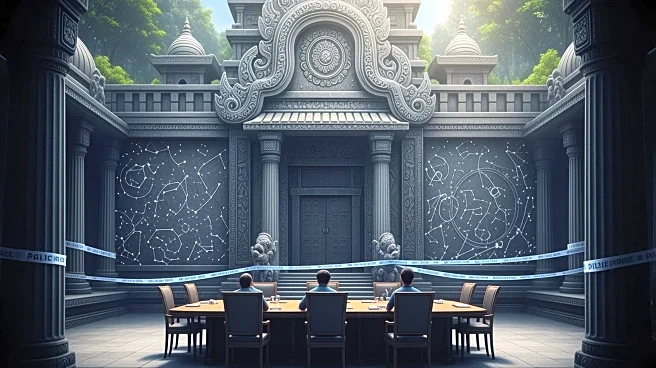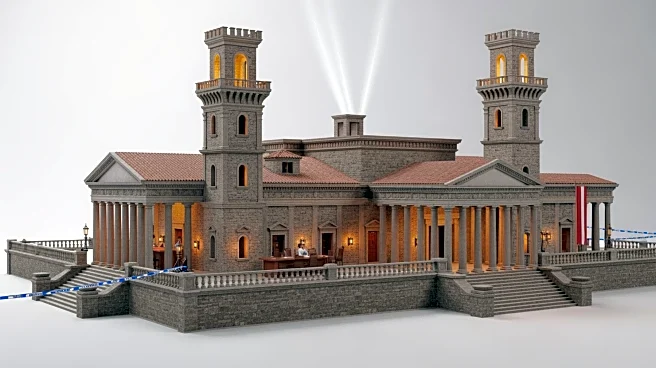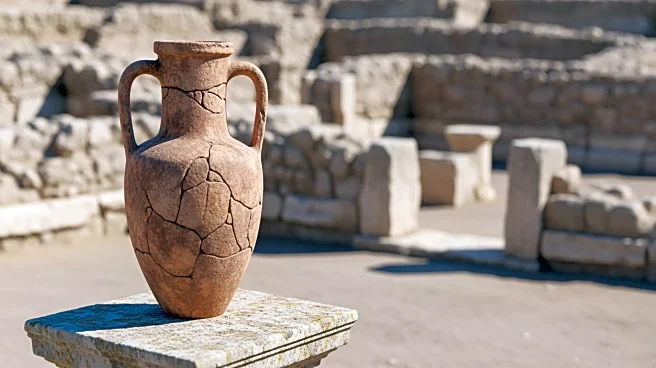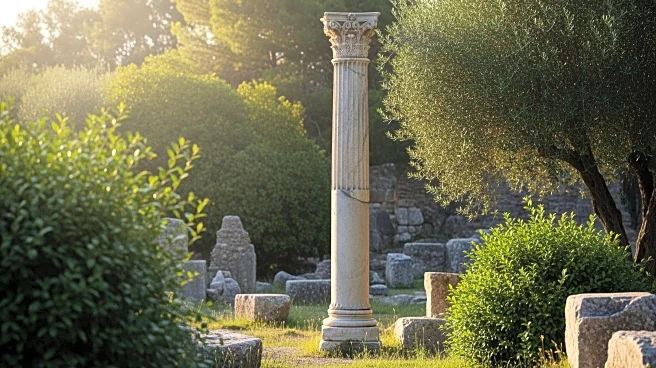What's Happening?
A newly studied archaeological site in Mexico, dating back 3,000 years, is believed to represent the cosmos and the 'order of the universe.' The site, known as Aguada Fénix, features a cross-shaped area
with small buildings and platforms, referred to as 'E group.' These structures contain ceremonial objects, including greenstone ornaments and ceramic vessels. The site is thought to have been a communal construction project, similar to Stonehenge, involving feasting and cultural exchange.
Why It's Important?
The discovery of Aguada Fénix provides valuable insights into the early Maya civilization and its cultural practices. It challenges previous assumptions about social hierarchy and suggests that large-scale construction projects could be achieved through collective action rather than coercion. The site's design reflects the Maya's understanding of the universe and their use of ritual calendars, offering a deeper understanding of their cosmology and societal organization.
What's Next?
Further research and excavation are needed to fully understand the significance of Aguada Fénix and its role in Maya society. Scholars are divided on the interpretation of the site as a cosmogram, highlighting the need for continued investigation and debate within the archaeological community.
Beyond the Headlines
The study of Aguada Fénix contributes to a broader reevaluation of Mesoamerican history, emphasizing collective action and cultural exchange over hierarchical structures. It also raises questions about the role of ritual and symbolism in ancient societies.











